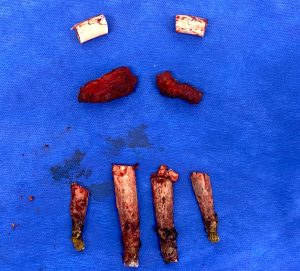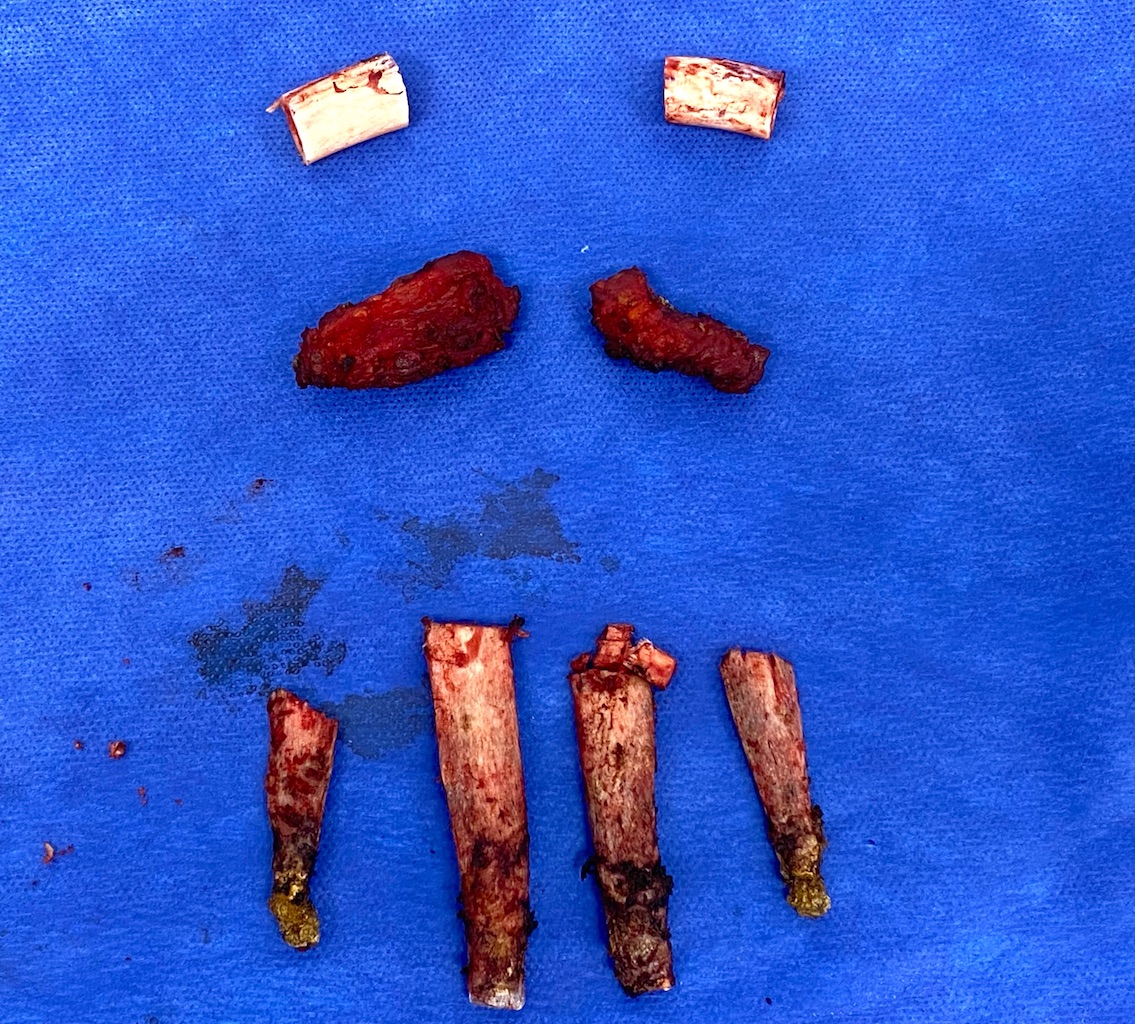
Because shoulder and waistline narrowing share a common body contouring objective of a more feminine appearance, it is not uncommon for a prospective patient interested in this objective to ask if they can be performed together. Because of recovery and travel issues for most patients this would not be an advised surgical combination. But in exceptional circumstances (to be subsequently defined) combining these two operations can be done.
When performing the combination of clavicle reduction osteotomies and lower ribcage ostectomies, the waistline procedure is always done first. In the initial prone position the combination of flank liposuction, removal of the outer portion of the free floating ribs #11 and #12 (and in some cases #10) and wedge latissimus dorsi muscle resection/reshaping is done. A circumferential waist binder is than applied.
The patient is then repositioned and redraped in the supine position (with the OR bed turned 180 degree) for the shoulder procedure. At the inner third of the clavicle a 2.5cm segment of bone is removed and put back together with titanium plates and screws. A temporary cross-arm binder is then applied.
These two body contouring operations combined remove up to 40+cms of bone length. While this is technically very achievable in a single surgery the aftermath of this surgery and its effects on the recovery process must be appreciated. From rib removal surgery, since it affects the central torso, it significantly affects in the short term getting up and down from a bed or chair. This is where the arms come into play to assist this process. But if shoulder reduction surgery is done at the same time, this removes the assistance of the arms in the critical first few days or week after surgery. This is where having an assistant available 24/7 in the first week after surgery is essential.
While the combination of clavicle bone reduction and rib removals should not be done for most patients seeking such bony contouring procedures, and certainly never in a patient who has not undergone prior surgery, a few patients may be acceptable candidates. If a patient has a good support system that they bring with them for the surgery and can allot an adequate recovery time (6 weeks), and is so motivated, then they would be considered an acceptable candidate.
Dr. Barry Eppley
Indianapolis, Indiana



